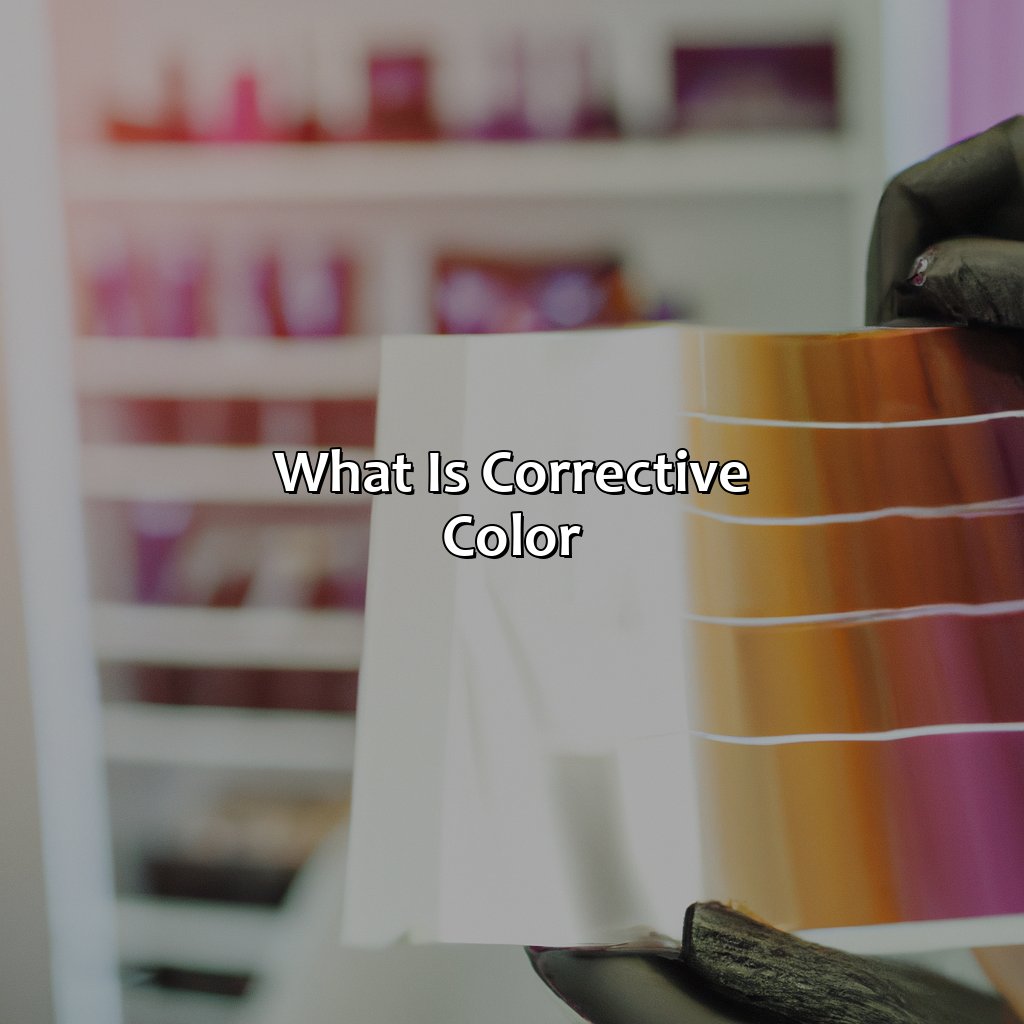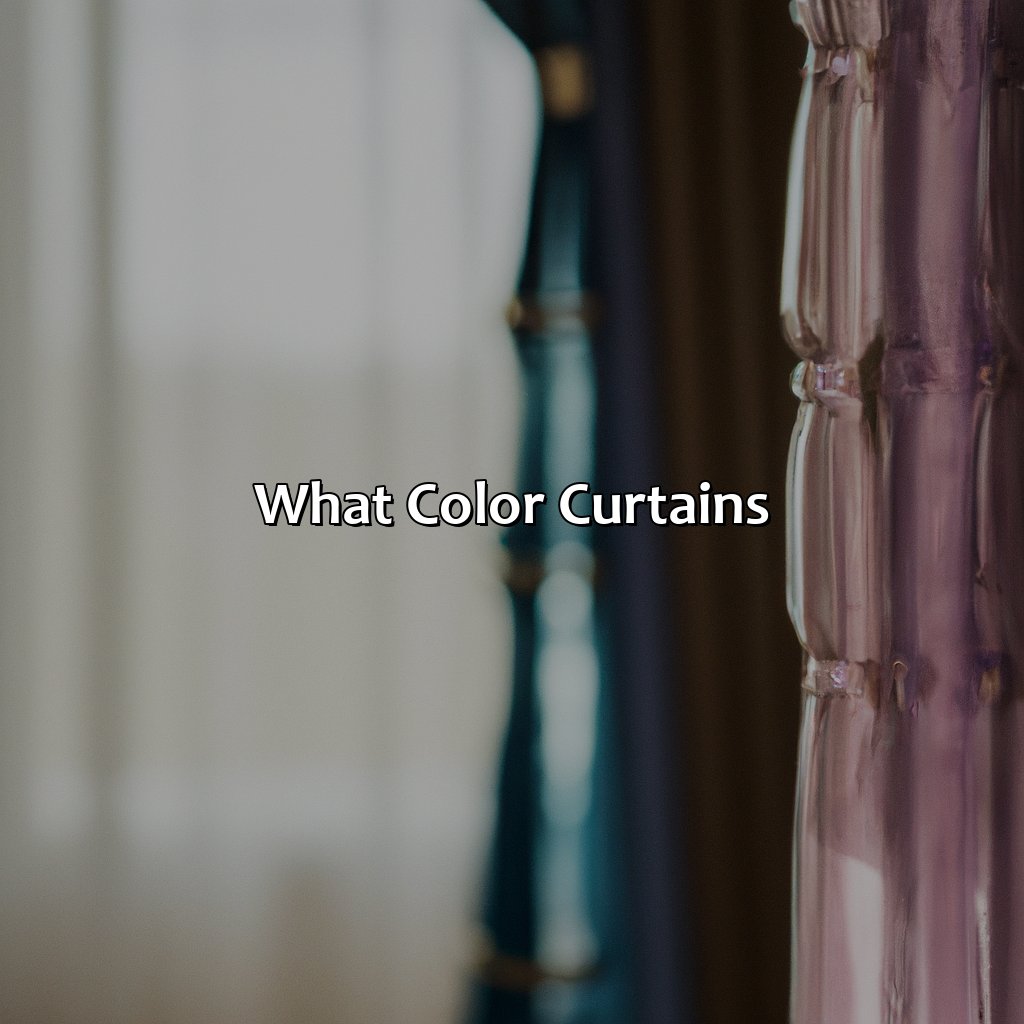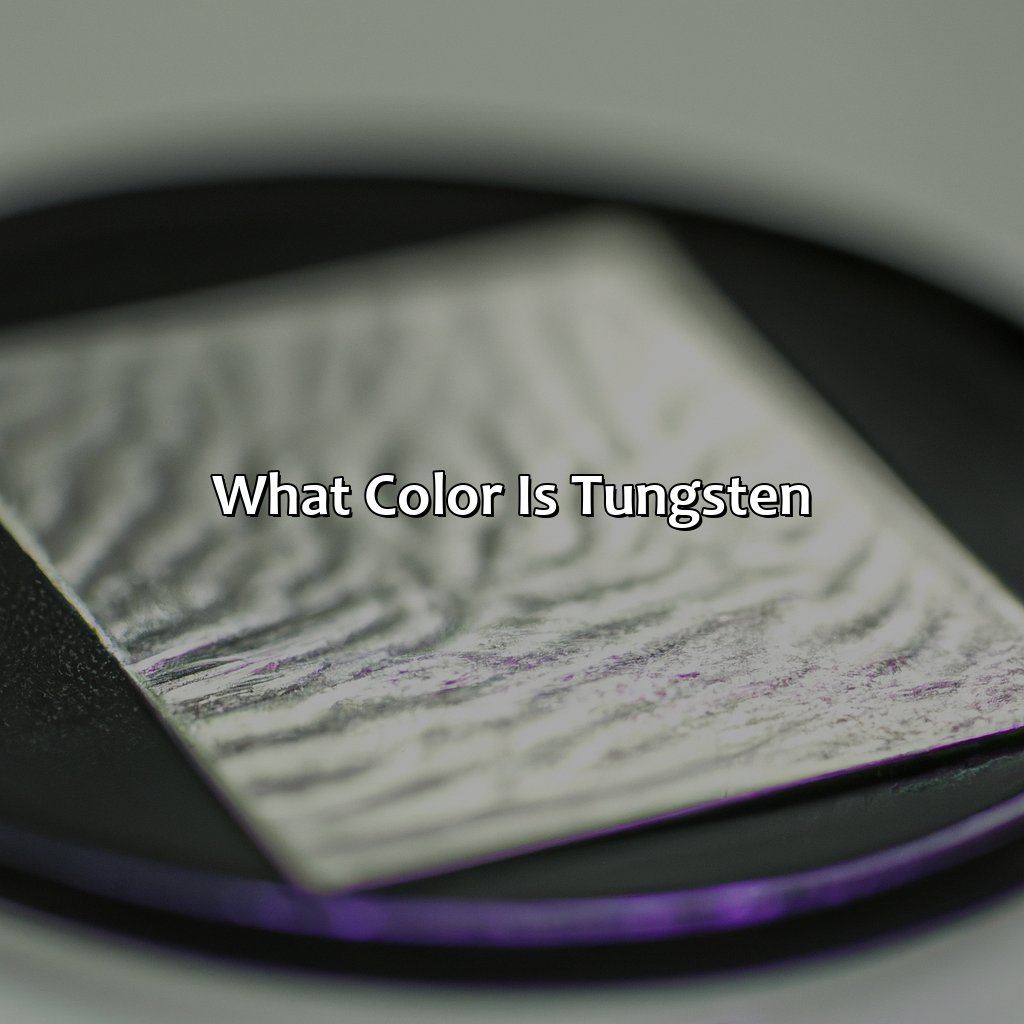Key Takeaway:
- Corrective color is a hair coloring technique that is used to fix hair color mistakes or enhance hair color. It involves neutralizing unwanted tones and enhancing desirable ones to achieve a balanced and natural look.
- Understanding color theory and the color wheel is essential to corrective color. Warm and cool undertones also play an important role in neutralizing unwanted tones, such as orange, green, yellow, purple, brassy, and ash tones.
- There are various color-correction techniques and products available, including color-depositing conditioners, shampoos, and treatments. It is important to select the right product based on individual needs and concerns, such as correcting brassy hair or selecting the right hair color brand for professional or at-home use.
Understanding Corrective Color

Photo Credits: colorscombo.com by Jason Thompson
Corrective color is a technique used by professional hairstylists to fix hair color mistakes or alter the existing hair color for a desired look. The process involves identifying the underlying tones of the hair and selecting the appropriate color to neutralize or enhance those tones. It takes skill and expertise to achieve the desired results and prevent further damage to the hair.
To achieve successful corrective color, it’s essential to understand the principles of color theory, including the relationship between primary, secondary, and tertiary colors and how they affect each other. In addition, it’s crucial to consider factors such as the hair’s texture, porosity, and previous treatments to determine the appropriate corrective color technique.
A common misconception is that corrective color is a straightforward process that can be done at home. However, it’s a complex and delicate procedure that should only be performed by a trained professional. Attempting to correct hair color mistakes at home can result in further damage to the hair and may lead to an undesired outcome.
Pro Tip: Always consult a professional hairstylist for corrective color services to prevent damage to your hair and achieve the desired outcome.
The Basics of Corrective Color

Photo Credits: colorscombo.com by Jason Scott
Understand the basics of corrective color in hair-dyeing. Color theory, color wheel and undertones are important. Pick the right shade as a solution. This section – “The Basics of Corrective Color” – explores color theory with “Understanding the Color Wheel” and “The Importance of Undertones“. Learn techniques to neutralize various tones.
Color Theory: Understanding the Color Wheel
Understanding the color wheel for hair can be essential when it comes to corrective color. The color wheel is a tool used to understand how different colors interact with each other, which is critical when choosing corrective tones.
In the following table, we can see how the color wheel works in regards to hair coloring:
| Primary Colors | Secondary Colors | Tertiary Colors |
|---|---|---|
| Red | Orange | Red-Violet |
| Yellow | Green | Yellow-Orange |
| Blue | Violet | Blue-Green |
Using complementary colors on the opposite side of the color wheel can cancel out unwanted tones. For example, if someone has brassy, orange-toned hair, a blue-violet toner could be used to neutralize it.
It’s important to consider the underlying pigments in hair; warm undertones have more red/orange while cool undertones have more blue/violet. Understanding this concept and using it in conjunction with the color wheel can help achieve desired results.
It’s worth noting that coloring hair involves multiple variables and can vary significantly based on factors such as natural pigment and previous treatments.
According to Good Housekeeping‘s Beauty Lab expert Birnur Aral, “The warmth level also depends on each person’s individual underlying pigments plus any color build-up (from dyeing or lightening). Therefore, it’s best to adjust formulas during salon visits with your stylist based on real-time pre-color testing.”
Neutralizing undertones is like playing a game of color Whac-A-Mole, but with the right products and techniques, you can win every time.
The Importance of Undertones
Undertones play a crucial role in corrective color. Correctly identifying and addressing undertones is essential to achieving desired results. Neutralizing orange, green, yellow, purple, red, brassy and ash tones can be done by using the right corrective color products.
In order to achieve beautifully balanced skin tone or hair color, it’s essential to understand undertones. These are the subtle hues that impact how we perceive colors. Understanding this information is crucial when determining which color-correcting product will work best for you.
Knowing your undertone helps determine what type of color-correcting product will work best. For instance, if you have fair skin with redness, using a green-tinted primer will help neutralize redness. Conversely, a peach-toned primer works well for those with dark circles and blue-colored undereye areas.
Neutralizing various tones requires precise use of specific products and techniques. Utilizing the wrong product or technique can cause further issues. A skilled professional can evaluate needs & recommend appropriate products/techniques before applying them accordingly.
True History: Undertones came into widespread knowledge as early as 1810 after Johann Wolfgang von Goethe produced his treatise “Theory of Colours”, where he theorized that colours were ‘composed’ rather than single sensations – they arise from the interaction between light and darkness to create an effect that is modified by surrounding movements.
Color correction: the magical potion for when foundation just won’t cut it.
Corrective Color Techniques
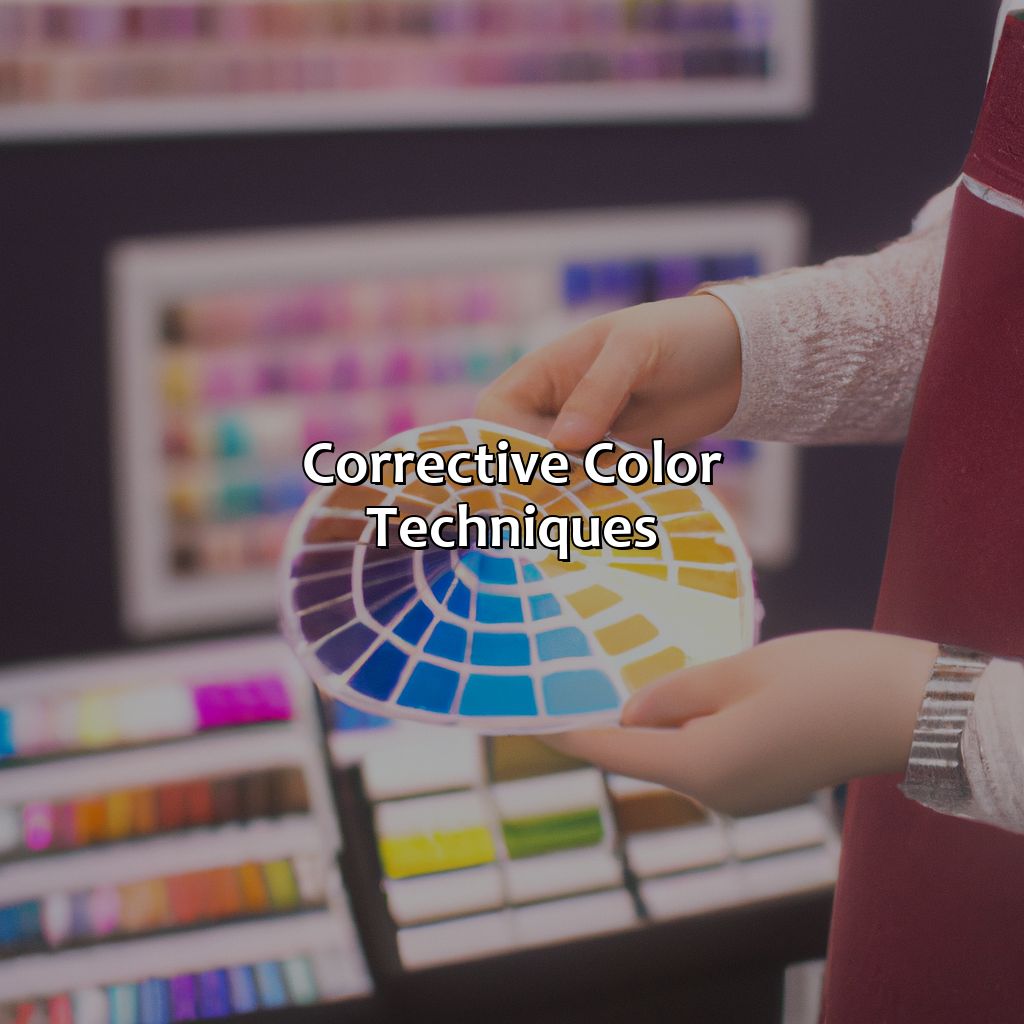
Photo Credits: colorscombo.com by Christian Rivera
Explore color correction products and their uses! Learn about corrective hair color techniques.
Color depositing conditioner, shampoo, treatments and their functions
In the first sub-section, we’ll talk about color depositing conditioner, shampoo, treatments and their functions.
Helpful tips for toning hair according to your skin tone
Then, in the second sub-section, find helpful tips for toning hair according to your skin tone. Discover techniques like toning brown hair and toning ombre.
Color-Correcting Products & Their Uses
Corrective Color involves the use of color-correcting products to address specific skin concerns that affect overall complexion. The following are some Color-Correcting Products & Their Uses:
- Color depositing conditioners: These products are used to refresh the tone, and add or enhance color to hair. It is used mainly to neutralize unwanted tones.
- Color depositing shampoos: These are similar to conditioners but have a more cleansing effect and less conditioning properties. They are used to treat hair discoloration issues.
- Color depositing treatments: Typically available in masks or color-depositing leave-in sprays, these temporarily dye the hair and nourish it at the same time, enhancing shine and vibrancy while correcting slight imperfections.
To select the right product for each concern, it is essential to understand that every skin tone is unique. Furthermore, understanding how different colors interact with each other on the color wheel can inform product selection.
For example, redness can be corrected with green-hued products while purple cancels out yellow. Additionally, one must choose a product compatible with their original color and intensity.
Lastly, suggestions for achieving optimal results include selecting high-quality formulas that work specifically for your skin type while ensuring adequate application by following instructions carefully. In sum, investing in corrective color products such as color depositing shampoos or conditioners among others will give you a seamless beauty routine while addressing your individual needs.
Correcting your hair color is like painting a masterpiece – it’s all about knowing which tones to blend and when to stop.
Color-Correcting tips for All Skin Tones
Color-Correcting Tips for All Skin Tones:
To achieve an even skin tone, it is essential to know the correct color-correcting tips. Depending on your skin tone and undertone, you need to use specific shades of corrective colors. Here are some color-correcting tips that work for all skin tones:
- For redness: Use green color corrector to neutralize the redness. This shade is suitable for all skin tones.
- For dark circles: If you have purple or blue dark circles, use a peach or orange corrector. For brown or gray-colored circles, use a yellow corrector.
- For dullness: A lavender-colored corrector works well for sallow skin tone to brighten it up.
- For hyperpigmentation: Opt for a corrector that has a hue closest to your natural skin tone and apply an opaque layer over the spot.
- For discoloration: If you face any discoloration due to aging or sun damage, choose a product with slight pink or peach tint
It’s important to note that while these tips work on all skin tones, they depend mainly on each individual’s unique skin concerns.
When applying corrective colors, make sure you blend them correctly before applying foundation. Pick the right shade according to your undertone as it will ensure that your makeup looks seamless. It’s crucial to be aware of how much product suits you — do not go too heavy-handed as it can lead to caked-on makeup.
For example, if toning hair at home by yourself consider opting for a moisturizing hair mask instead of using bleach directly in order not dry out locks.
Find the right corrective color product to fix your hair color and skin concerns, because no one wants to look like a walking color disaster.
Evaluating Your Corrective Color Needs
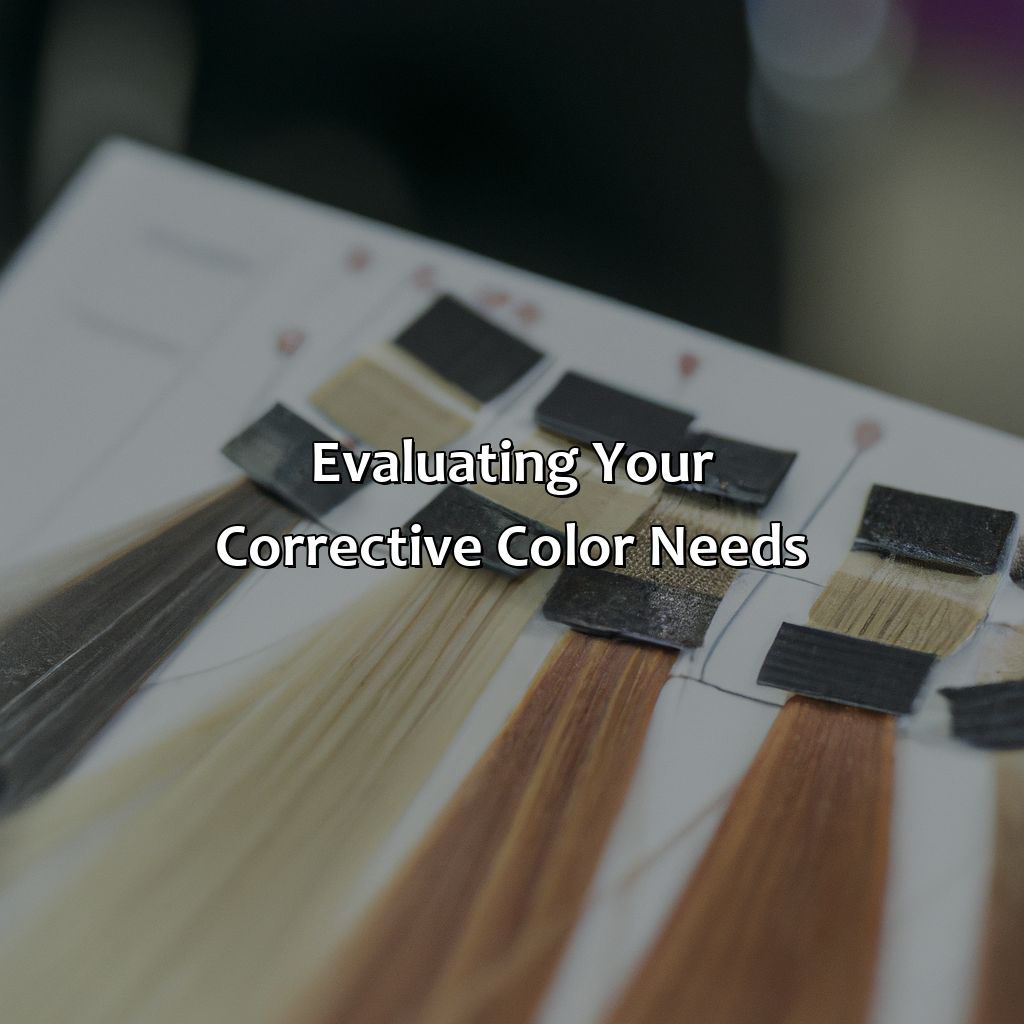
Photo Credits: colorscombo.com by Billy Martin
Evaluate your hair color needs with the right solution. Identify skin concerns and the correct corrective color product. What are the hair color concerns? Brassy, orange, green, yellow, purple, or red hair? Choose the product based on natural hair color, ammonia-free, vegan, organic, professional, DIY or hair color brands. This is key for color correction services and at-home color correction.
Identifying Your Skin Concerns
Managing color correction is critical for achieving a flawless complexion. By examining your skin, identifying concerns like correcting brassy, orange, green, yellow, purple or red hair hues and selecting the right product, you can significantly improve the appearance of your skin.
To determine the products you need, assess your skin tone thoroughly to determine where sun damage has occurred and where pigmentation problems are most prevalent. By analyzing these areas of concern, it becomes easier to identify areas where corrective color application will be most effective. Rather than relying on trial and error with multiple different products, take the time to understand what sort of toning will work best for each area of concern. By understanding this approach, you can make more informed decisions about which products will work best for your specific needs.
Applying corrective color requires patience and attention to detail. It is necessary to take precise measurements before applying any product to ensure that you have accurate results every time. As with any beauty routine, maintaining the results requires continued dedication and commitment to sticking with the regimen. Failure to do so could leave you feeling self-conscious about imperfections in your appearance.
The key takeaway here is learning how to incorporate corrective color into your beauty routine effectively using NLP techniques while getting professional suggestions from experts. If there’s one thing we know for certain about transformative changes in our lives – it’s that procrastination causes us nothing but misery and regret in the long run! So don’t wait another day – embrace corrective color today!
Selecting the right corrective color product can be overwhelming, but it’s worth it to avoid looking like you did color correction at home with a blindfold on.
Selecting the Right Corrective Color Product for You
Choosing the Correct Corrective Color for Your Skin Needs
Selecting the right corrective color product can be tricky, but it’s essential to achieve the desired results. Color correction services at a salon can be expensive, so you might opt to do it at home. For that reason, knowing your skin undertone and identifying your concerns help narrow down the options.
Color-neutralizing is key to achieve uniformity in skin appearance. Organic, natural hair color brands containing ammonia-free, vegan formulations exist in the market now that cater to every skin tone. A professional hair colorist would recommend a corrective product with cool or warm tones depending on your undertones.
To get started with selecting a corrective color product for you, determine if you have redness (pink or rosy undertones), sallow tones (yellow skin), bruises (purple/blue) or dark spots/scars (orange/brown). After identifying these areas of concern and determining your general complexion (cool-toned versus warm-toned), you can check out DIY hair coloring products specifically made for correcting discoloration on specific parts of your face/body.
Incorporating proper maintenance steps like using sunscreen and keeping from prolonged sun exposure helps prolong the outcome of color correction treatments. Remember not to overcorrect as this will put more emphasis on other imperfections. Looking for advice may seem daunting but don’t be afraid to ask reputable salons/brands for recommendations.
A friend of mine once wanted to look brighter by adding a lot of yellow toner in her corrector mix, only to realize it came out almost looks greenish and wasn’t happy with the result. Consultation could’ve saved her money and gave her satisfying results sooner! A little color correction can fix your hair, but a lot of color-enhancing products can make it shine.
Corrective Color Application & Maintenance
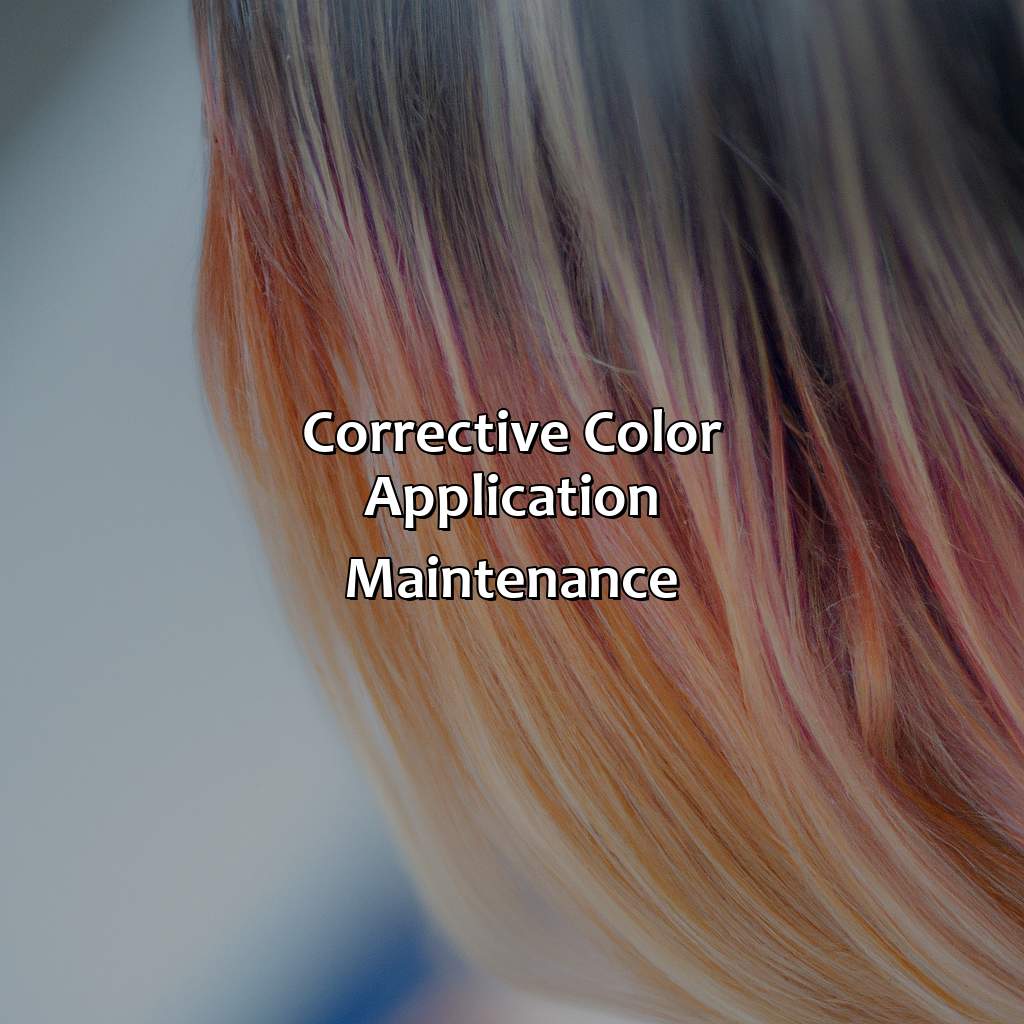
Photo Credits: colorscombo.com by Sean Adams
Fix your hair color with a corrective color application! Try options like color gloss, glaze, dye, tint, stain, rinse, demi-permanent, semi-permanent, and permanent color. To help, we have two sections:
- Tips for Applying Corrective Color Products
- Maintaining the Results of Corrective Color
This covers hair color correction, color specialist, color preserving, enhancing, and revitalizing.
Tips for Applying Corrective Color Products
When it comes to achieving hair color correction, correct application of corrective color products is crucial. Here are some expert tips on how to flawlessly apply corrective color products:
- Use a color wheel: Understanding the different hues and how they interact with each other is essential. In case of unwanted tones, use complementary colors for a neutralizing effect.
- Prepare your canvas: Before applying any product, make sure your hair is clean and dry. Brush out all the tangles as it ensures even coverage.
- Be precise: Apply corrective products only on affected areas as smudging can lead to other issues.
- Keep it simple: Instead of using all the colors in one go, gradually apply one shade at a time while monitoring effects.
- Take help from hair color specialist/expert: It is always advisable to take advice from an experienced professional who can guide you accordingly.
To complement the above tips, ensuring long-lasting results require after-care maintenance such as using sulfate-free shampoos and conditioners that protect color-treated hair from fading. Finally, opting for personalized consultations with a hair color specialist or expert eliminates guesswork throughout the whole process. According to Cosmopolitan Magazine article “10 Questions You Need To Ask Your Hair Color Specialist” by Kristina Rodulfo, “Hair coloring should be carefully considered so your stylist should willingly answer all queries.”
Keep your color popping with these tips for maintaining the magic of corrective color.
Maintaining the Results of Corrective Color
After undergoing corrective color treatment, preserving the results is essential to maintain the desired look. Here’s how to ensure your corrective color lasts.
- Color-preserving shampoos and conditioners are vital when it comes to maintaining the vibrancy of your hair color. Opt for products that are formulated with color-enhancing properties.
- In-between salon visits, a color revitalizing treatment such as a gloss or glaze can refresh your hair’s hue and shine.
- Avoiding excessive heat styling and prolonged sun exposure will help prevent hair color from fading prematurely.
To keep up with your new vibrant look, remember to use products that cater to colored hair. A history of repeated dye jobs can weaken strands over time, so always check for damage maintenance options.
Some Facts About Corrective Color:
- ✅ Corrective color is a hair coloring technique used to correct unwanted tones in the hair, such as brassy or orange tones. (Source: L’Oréal)
- ✅ Corrective color involves a consultation with a professional colorist to determine the best course of action. (Source: Allure)
- ✅ Corrective color can be achieved through techniques such as toning, color balancing, and color removal. (Source: Matrix)
- ✅ Corrective color may require multiple sessions to achieve the desired result. (Source: Redken)
- ✅ It is important to maintain proper hair care and use products specifically designed for color-treated hair when undergoing corrective color treatments. (Source: Schwarzkopf)
FAQs about What Is Corrective Color
What is corrective color?
Corrective color is a technique used in hair coloring to correct any unwanted tones or hues that have been previously applied to the hair. It involves adding complementary colors to neutralize and balance out the tone of the hair.
What are some common hair color mistakes that require corrective color?
Common hair color mistakes that require corrective color include brassy or orange tones, overly dark colors, and patchy color distribution. Corrective color can also be used to achieve a desired color that was not achieved with a previous coloring session.
How is corrective color different from regular hair coloring?
Regular hair coloring is used to add color or dimension to the hair, while corrective color is used to fix or adjust an existing hair color. Corrective color involves a more complex process and often takes longer than regular hair coloring.
Can corrective color damage hair?
Corrective color can damage hair if not done properly or if the hair is already in a weakened state. However, a skilled stylist will assess the condition of the hair and use appropriate techniques and products to minimize any potential damage.
How many sessions are required for corrective color?
The number of sessions required for corrective color depends on the extent of the correction needed and the current condition of the hair. Some corrections may be achieved in one session, while others may require multiple sessions over several weeks or months.
Is corrective color suitable for all hair types?
Corrective color is suitable for most hair types, but it is important to consult with a skilled stylist who will assess the condition of your hair and determine if corrective color is appropriate for you. The stylist will also be able to recommend the best approach to achieve your desired result.
